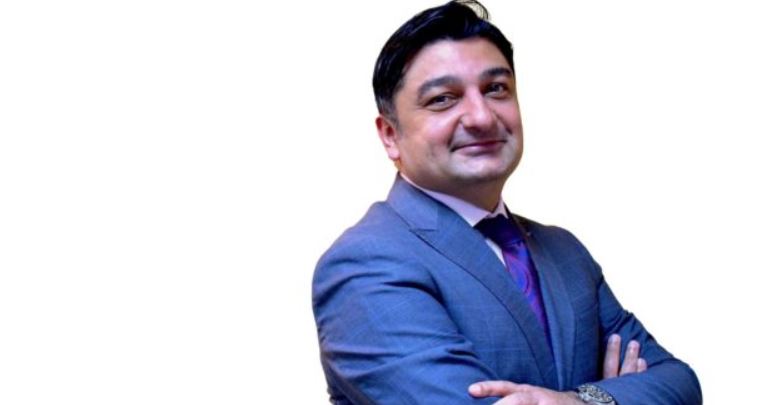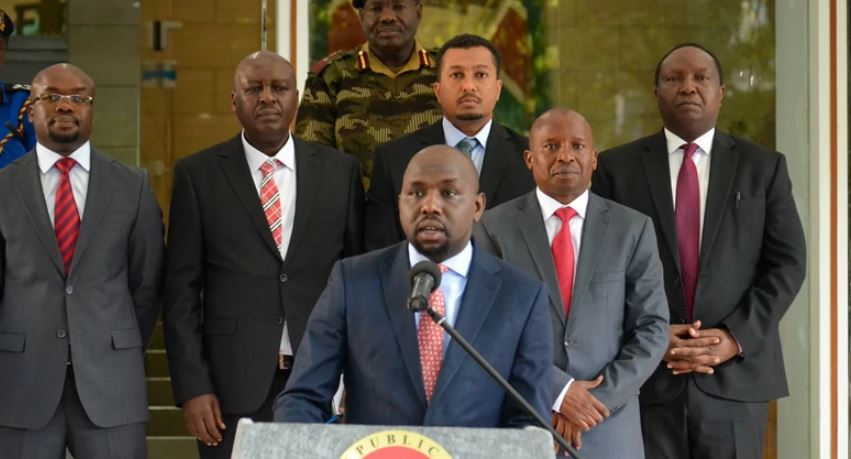
As an institution whose business is in the healthcare space, what would you say of the current Covid-19 situation in the country?
I can say safely that the worst is behind us but life is not a picture; it’s a movie. One scene affects the other. If you look at the last 24 months, many businesses have lost money, people lost their jobs, countries took loans; not for development but to pay other loans and salaries. It will take some time for businesses and countries to recover.
The effects are being felt today and will continue in the future as we still see some supply disruption. Now is time for developing countries like Kenya to rebuild better and stronger by ensuring self-sufficiency, self-reliance, and focus on best practice and invest in human capital and technology so we are better prepared for the next pandemic if it happens.
How prepared were you for the pandemic? Do you think to some extent you were stretched beyond what you imagined a pandemic would be?
I think nobody can be prepared 100 per cent for the pandemic. No institution or country. We have seen even the industrialised world suffer and struggle.
But what are the traits of preparedness? You have to have the right foundations. What are these? You have to have the right people, right equipment, right practices and policies and the right quality standards. Once the foundations are strong it is all about tweaking the plans and be more prepared.
Obviously, in the past two years, the health infrastructure, including our hospital, did get stretched. There were very many difficult moments. The Covid-19 waves did not make it easy for any institution including ours but we were able to cope with it because of the strong foundations. We had the right Intensive Care Units for example.
Your facility received a Sh290 million grant from Proparco, an arm of AFD (French Development Agency) early in the year. Do you mind sharing how this was reached and how you plan to utilise the funding?
The Aga Khan Development Network (AKDN) works in many developing and underdeveloped countries like Kenya, Pakistan, and Tanzania. The principal of AKDN is to complement government(s) efforts in healthcare, education, culture and environment.
Many development partners like KfW, AFD understand our principle. They work with AKDN and other social development agencies of AKDN.
Coming to your question, you may know or not know this hospital spends Sh250 million every year on patient welfare for people who cannot afford quality healthcare but require surgeries or cancer care whom we treat them for free. We do not count bad debts or discounts as patient welfare.
Patient welfare is a much targeted fund for the vulnerable segments of the society. This grant, 65 to 70 per cent, will help us expand that envelope. We will be able to serve more patient under the welfare. Part of the funds will go to infrastructure like the oxygen plant for our sister institution Aga Khan Hospital Mombasa and Kisumu.
As private not-for-profit institution, how do you balance between what a funder or investor may want against what you stand for?
We don’t have shareholders, investors or partners so we are driven by our mandate. Our mandate is to make an impact in the communities we operate. We are guided by our principles and values which we call IQRA that stands for Impact, Quality, Relevance and Access. So whatever we do we have to make an impact.
To have a university hospital, to have an academic agenda is making an impact because you are not only treating patients for today, but you are also training doctors for tomorrow.
The Sh250 million on patient welfare is creating access. Similarly beside this hospital we have 51 outreach centres across Kenya. In those centres, we provide the same quality of care but at a lower rate. We are therefore creating access for those patients as well.
We cannot build this hospital in all the counties but we can start these centres which can them provide quality care. But we are not for losses either. If you are not financially sustainable, the quality is hallucination. What will happen tomorrow if you are not financially sustainable? You will take loans, and take more loans to pay off other loans and the vicious cycle will continue. This hospital is financially sustainable.
There have been interest from private equity firms in the healthcare space. What would you say makes this space attractive?
In healthcare setting, there are faith-based institution, public institution, for profit and not for profit institution. As I said, we are a not-for-profit institution. Hospitals funded by private equity firms have one agenda and that is profitability and return on investment. They see profitability in any segment be it transport sector, healthcare, food sector; they will venture into it.
We are seeing many of these private equity firms entering into developing countries like Kenya in the healthcare segment as well but the objective is returns.
What does the accreditation by the Joint Commission International as a Centre of Excellence for the management of stroke mean for the facility?
Quality cannot be an accident. It has to be your lifestyle. In your DNA. It is in every person you employ every equipment you buy, every protocol you set up; you have to have the right quality. This will ensure the best clinical outcomes.
It is easy to say an institution is a quality institution but it has to be externally validated. We have an internal validation process overseen by the quality department which is made up of clinician, nurses, epidemiologists and statisticians who do regular internal audits to determine that whatever policies and procedures listed are practiced on the ground.
But then we require an external validation. When you talk of the Joint Commission International, it is a gold standard when it comes to healthcare quality accreditation. And it is from the United States. We have benchmarked ourselves against the best in the world.
How do you debunk the notion that good quality healthcare always comes with a costly price tag?
There are two aspects of healthcare: first is the affordability and the other is access. It is true that quality comes with price. And if it is true for healthcare, it is true for food services, university education, airline tickets, and housing.
I think that is where the public and private sector have to work hand-in-hand to create the right service model, pricing model and service levels. For Universal Health Coverage to be successful, no single entity or segment can work in silo.
If the private sector and public institutions work hand in hand that will ensure Kenyans get good quality care. What we have seen and continue to see is that the focus is very much on the cost, which is fair, should be on it. But at the same time, are we getting the right quality of care? That is equally important.
You have to marry the two. The disbursement and support should not just be tied to the cost but I think it should be tied equally important to the quality of care and the service level.
A recent report by Haki Jamii did note that the healthcare space in the country is largely privatised, that many are not able to afford it. What are your thoughts on this?
I think it is what is happening in urban versus rural areas. If you look at urban, private sector is very much concentrated. If you look at rural areas and small counties, they have neglected healthcare both by public and private level. Those are two different sides completely.
For healthcare objective and goals to be met, public sector alone do not have and will not have enough resources. They have to work and should work with credible private sector.
It is true the vacuum created has been filled by private sector. But again as I said there are private facilities for profit out to make a quick buck, there are credible not for profit and also credible for profit.
Working together we can determine: what segment the public sector will fund and what role will the private sector play. And that will answer the question: should public institutions invest so much in urban setting where the private sector is predominantly available or we take those resources in the communities in the counties where health infrastructure is wanting?
Now that is the question.








